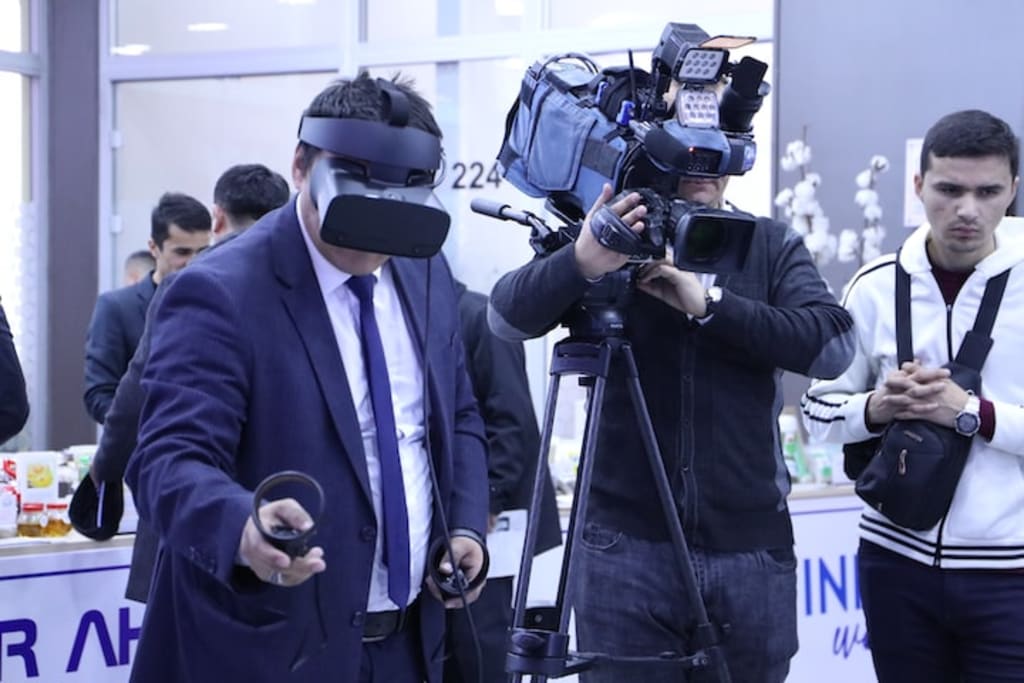Virtual Reality And Education: Transforming Learning for Students
VR of Education

VR and Education: Transforming Learning for Students
Introduction:
Virtual Reality (VR) technology has emerged as a revolutionary tool in the education sector, transforming the way students learn and absorb information. With its immersive and interactive capabilities, VR offers a gateway to experiential learning that was previously unimaginable. This article delves into the impact of VR on education, exploring its benefits, challenges, and potential applications, paving the way for a transformative learning experience for students.
Enhanced Engagement and Active Learning:
Traditional classrooms often struggle to captivate students, leading to disengagement and passive learning. VR, on the other hand, allows learners to step into realistic and simulated environments, sparking their curiosity and encouraging active participation. Whether it's exploring ancient civilizations, dissecting virtual organisms, or traveling through space, VR provides an unparalleled level of engagement, making learning an enjoyable and memorable journey.
Accessibility and Inclusivity:
One of the significant advantages of VR in education is its potential to cater to diverse learners, including those with special needs. By creating inclusive virtual learning environments, educators can accommodate various learning styles, ensuring that every student can participate and thrive. This democratization of education fosters a more equitable and accessible learning experience, breaking down barriers that once hindered educational opportunities.
Empowering Practical Skill Development:
VR enables students to practice and refine practical skills in a safe and controlled setting. Medical students can perform virtual surgeries, engineering students can design and test prototypes, and language learners can engage in immersive conversational scenarios. This hands-on approach not only boosts students' confidence but also enhances their competence in real-world situations, bridging the gap between theory and practice.
Fostering Critical Thinking and Problem-Solving:
Incorporating VR into the curriculum encourages critical thinking and problem-solving abilities. Students are presented with complex scenarios that require thoughtful decision-making and strategic planning. Through trial and error within the virtual world, learners develop resilience and perseverance, which are essential qualities for success in the real world.
Breaking Down Geographic Boundaries:
VR transcends geographical limitations, enabling students to embark on virtual field trips and cultural exchanges without leaving the classroom. This immersive experience exposes learners to a rich array of cultures, historical sites, and natural wonders, broadening their perspectives and fostering global awareness.
Personalized Learning Pathways:
VR technology allows for personalized learning pathways tailored to individual student needs and preferences. By tracking each student's progress and performance within the virtual environment, educators can offer targeted feedback and adaptive content, ensuring that learning is both efficient and effective.
Overcoming Resource Constraints:
VR offers a cost-effective solution for institutions facing resource constraints, as it can replicate expensive laboratory equipment or other learning materials virtually. With VR, schools can provide students with diverse learning experiences, regardless of their financial limitations.
Challenges and Future Directions:
While the integration of VR in education holds immense promise, there are also challenges that need to be addressed. These include the initial cost of implementing VR technology, the need for extensive teacher training, and concerns about potential health effects on young learners.
Despite these challenges, the future of VR in education remains promising, as the technology advances and becomes more accessible, its potential to transform learning experiences will only grow. Educators, policymakers, and technology developers must collaborate to leverage VR's full potential and create a more engaging, inclusive, and effective educational landscape for students.
Conclusion:
Virtual Reality is revolutionizing education by providing immersive, interactive, and inclusive learning experiences for students. Its potential to engage learners, foster critical thinking, and overcome barriers to education makes it a valuable tool for modern educators. As we embrace the opportunities and tackle the challenges, VR has the power to transform education, empowering students to become active, adaptable, and lifelong learners in an ever-evolving . Virtual Reality has proofed that technology has more potential to unfold.





Comments
There are no comments for this story
Be the first to respond and start the conversation.